
Peace – The Exhibition is the Museum’s summer 2014 exhibit, brought to us by the Canadian War Museum. It is a glowing success, attracting about 6,000 visitors in just six weeks. One of the elements that make it so successful is the activities that encourage visitor participation. The tile mosaic, where visitors are invited to contribute their own notion of peace on a coloured square piece of paper, has been very popular. The interpreters collect the tiles and use them to make a mosaic on the wall in the exhibit. Over 600 people have contributed so far, and the number continues to grow every day. The folks at the Canadian War Museum really knew what they were doing when they designed this activity. It is appealing to everyone, from seniors to small children and it gives a great opportunity to contribute in a meaningful way. Some of the tiles might make you laugh; others will pull at your heartstrings.
I recently asked our Interpreters to pick out their favourite tile, and tell me why they liked it so much.
Here’s what they had to say:
Scott
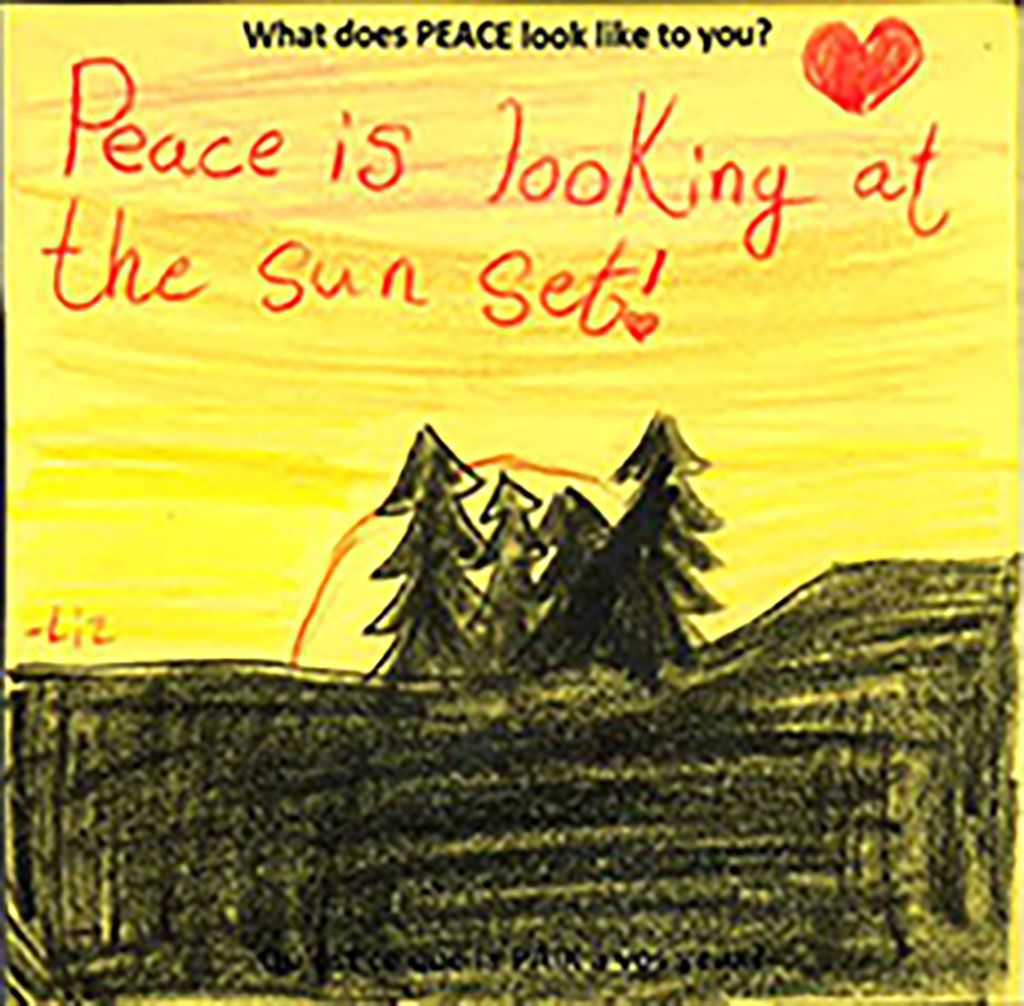
I chose the tile of the sunset and pine trees. I imagine myself outdoors enjoying the peace and tranquility of the Canadian wilderness. I think the wilds of Canada can be representative of the peace and security we enjoy living here in Canada. We can explore it safely, free from the threat of violence.
Emily
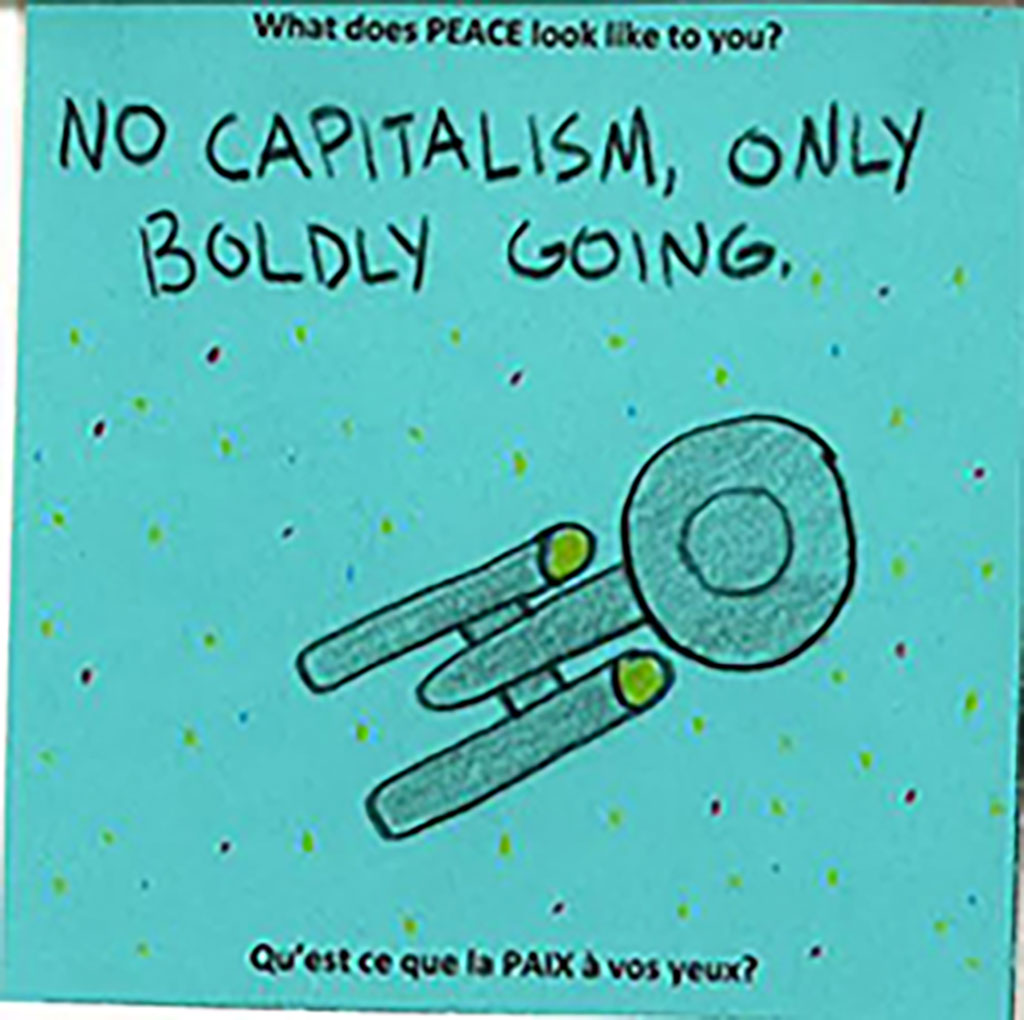
The tile "No Capitalism, Only Boldly Going" with a drawing of the Star Trek Enterprise caught my attention because I would have never made that association but it makes perfect sense. One of the big themes of the show is exploring the universe in the hopes of making friends with new people with vastly different cultures from their own. This is of course different from the capitalist system where the focus is on connections based on profit and trade, not friendship. So I think the artist is trying to point out here that peace for them is exploring the world, and making connections and friends, with everyone they see. I definitely share this trait, as I try to make friends wherever I go. The tile also stood out to me because it reminded me of the times I spent watching Star Trek with my Dad growing up. Even though I don't remember much of it, because I was pretty young when we watched it, it was such a big part of my life that I still have a soft spot for it and I definitely think it plays a part in why I try to treat every new person I encounter as a possible new friend.
Carter
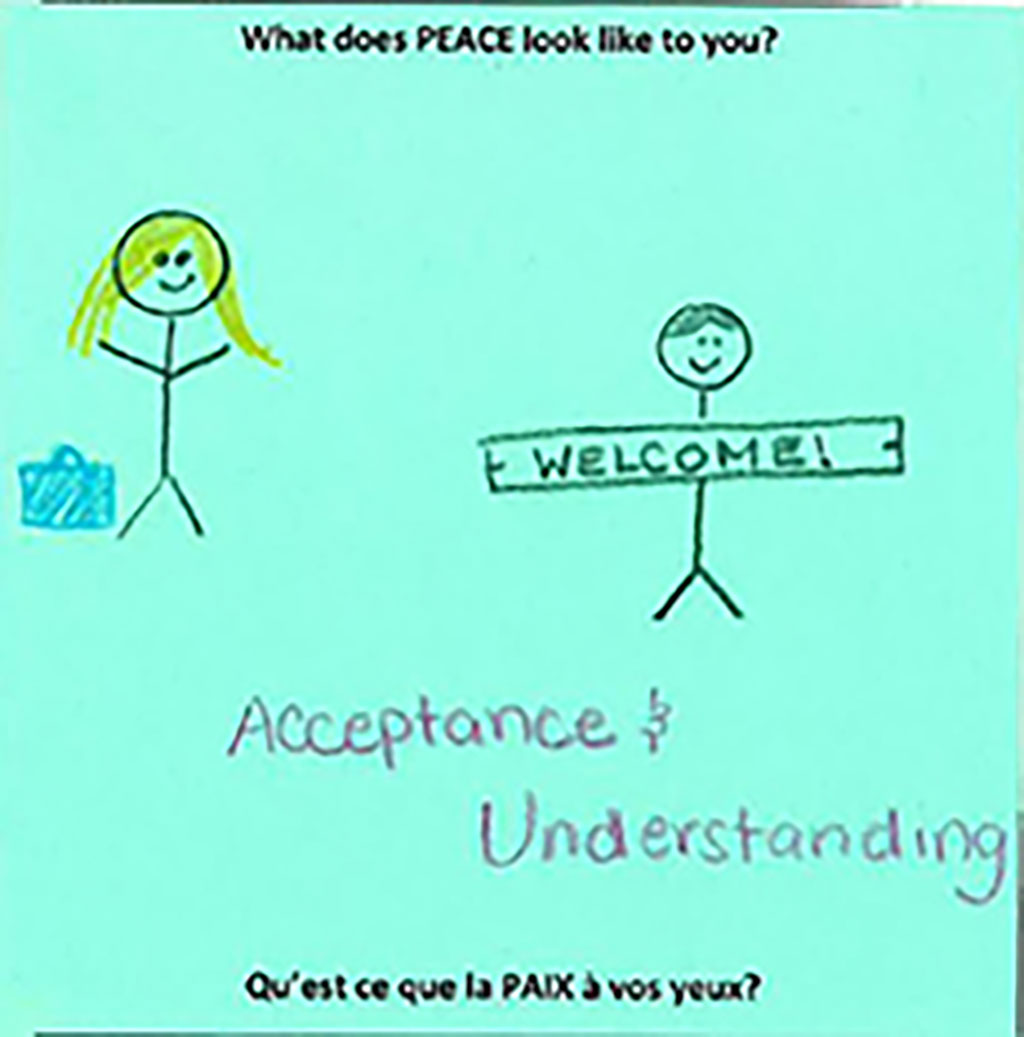
I first noticed this tile because it illustrates welcoming a newcomer, which was and is still the true spirit of Pier 21. I believe accepting and trying to understand others is important, and is something we can all do to make our world more peaceful.
Katharine
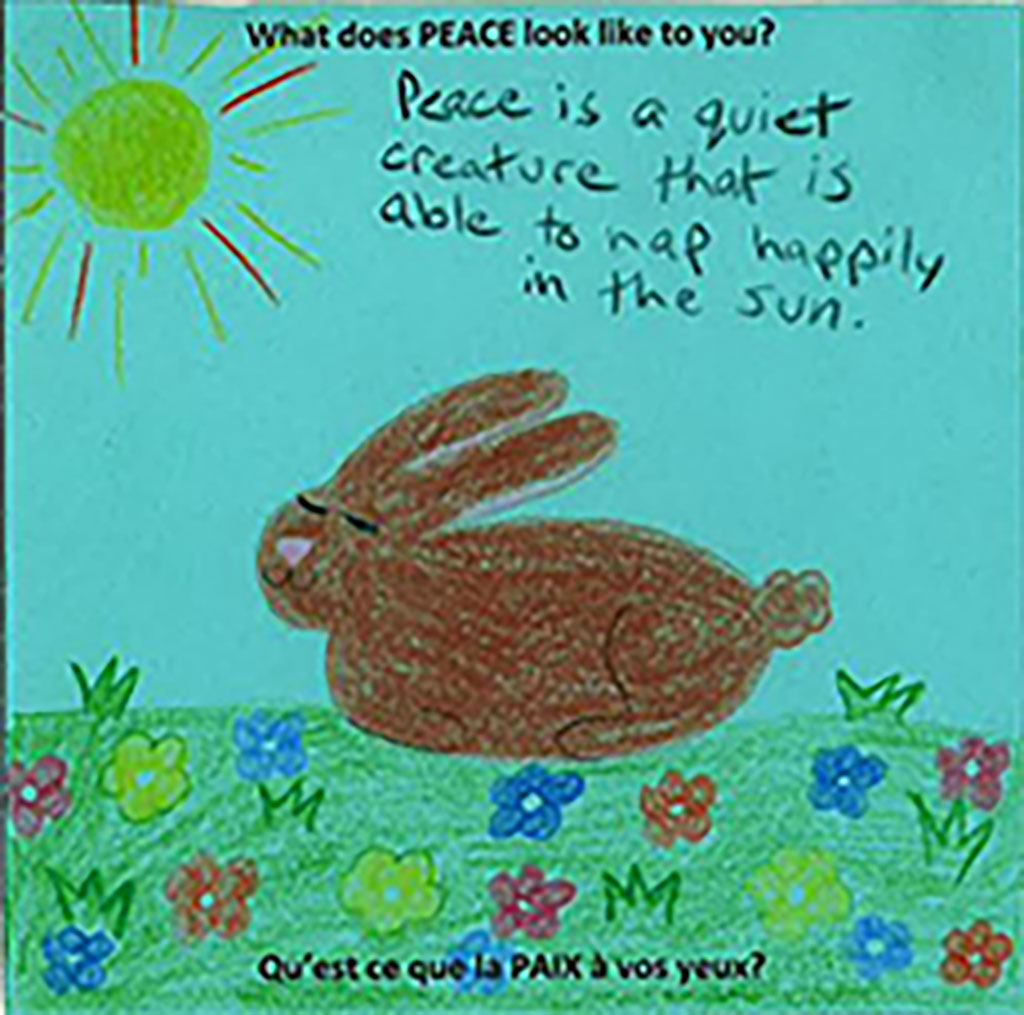
This card, for me, really captures what peace means. Any creature or person should be able to have the opportunity to graze, relax and enjoy nature. Peace to me means the ability for any living thing, whether it be this rabbit, any animal or any person, to enjoy their time and feel at peace without fear, stress or judgement. Being outside in the in the sun like this rabbit, experiencing nature and its tranquility is what peace means to me.
Meghan
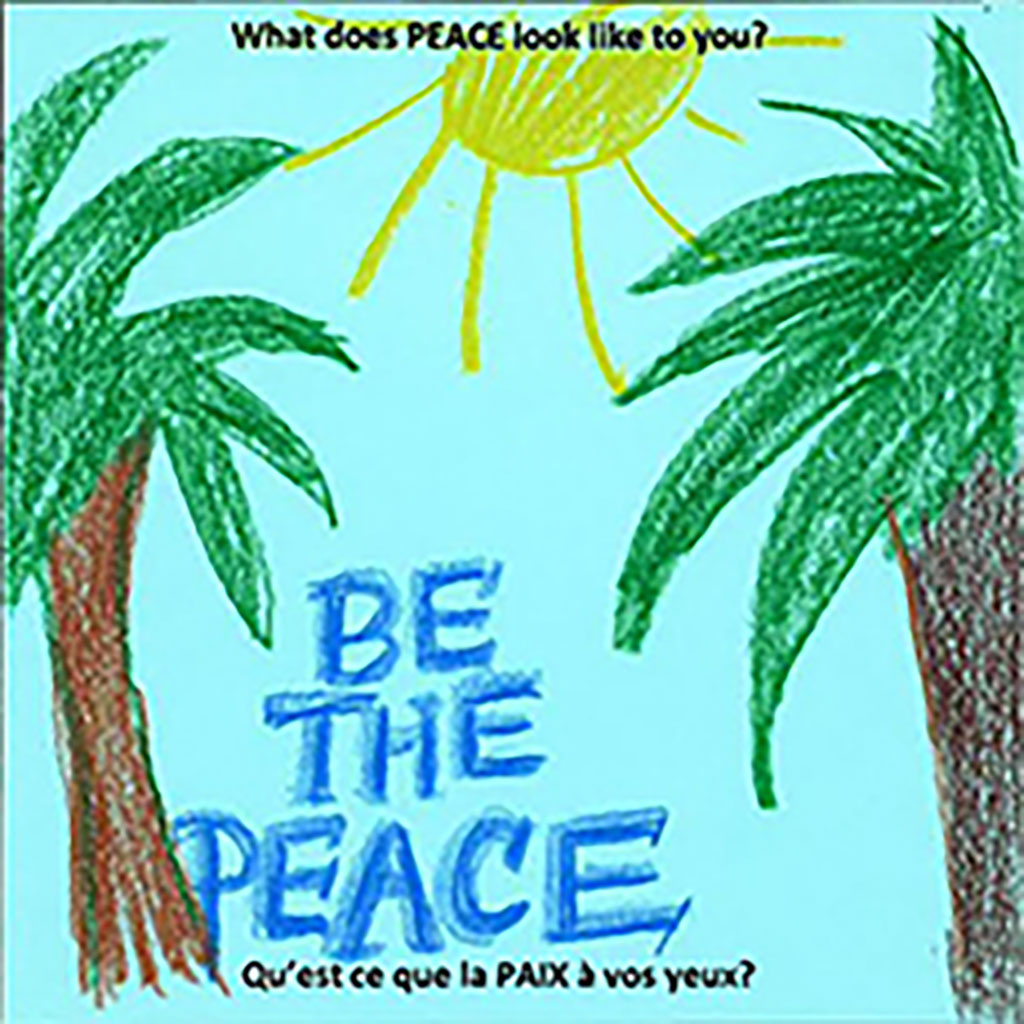
This tile immediately caught my eye for its simple message, “BE THE PEACE”.It immediately made me think of my favourite quote from Ghandi, “Be the change you wish to see in the world.” I think that if we can all exemplify the peace that we wish to see in the world it will be achieved. As an educator, I always tell my students that change can begin as something small, even by just one person, and to never think that they cannot change the world. Look at Lotta Hitcshmanova (whose uniform from the USC (Unitarian Service Committee) Canada is on display in the exhibit) and what she was able to achieve and how many people she was able to help after the Second World War through her hard work, dedication and perseverance. I also was attracted to the palm trees that they drew on their tile. As we do not have palm trees in Canada, I often associate them with peaceful and relaxing vacation destinations where we can take a break and rejuvenate from our everyday lives.
Susie
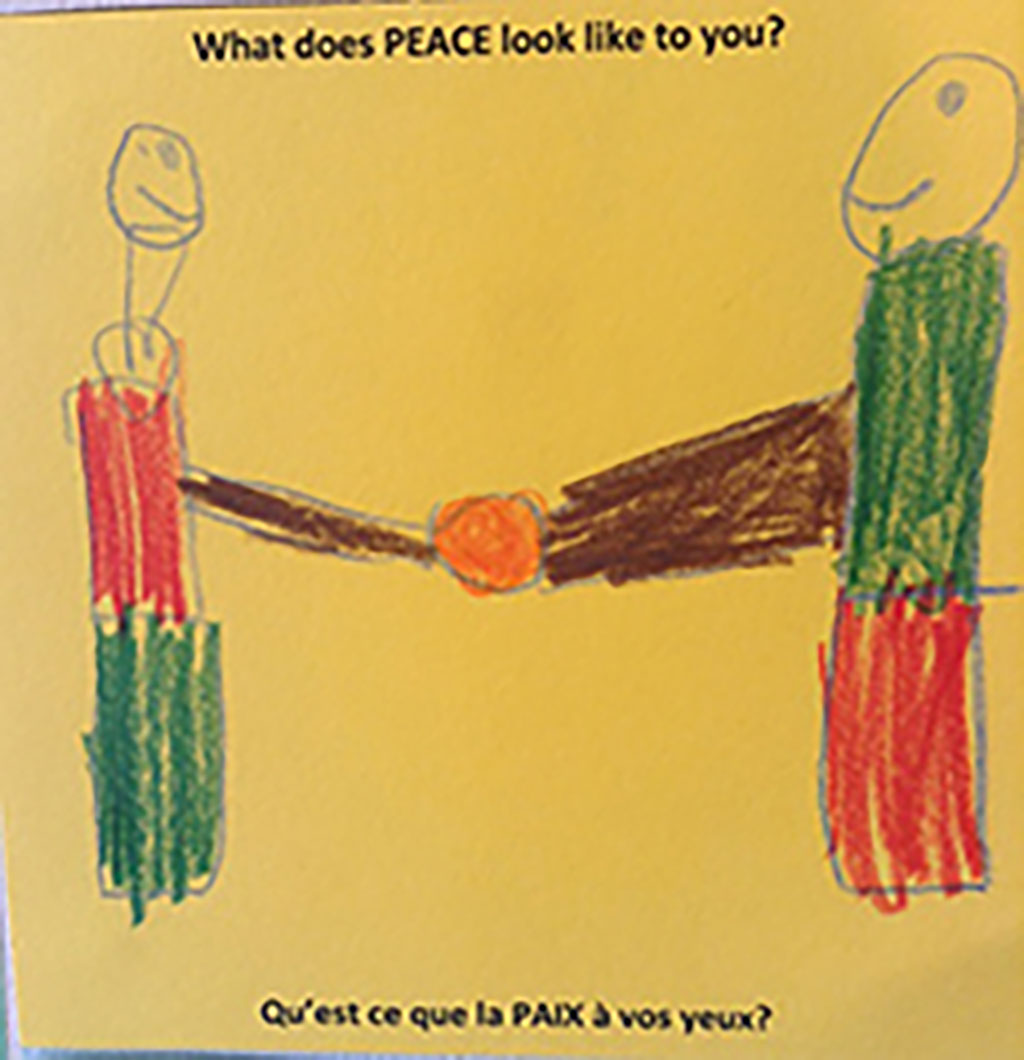
What does peace look like to this visitor? It looks like a smile and a handshake.
Peace – The Exhibition is divided into three themes that correspond to different approaches to Peace: Negotiating, Organizing and Intervening. I like that this young visitor’s idea of peace ties in well with the first of the three themes. It sure seems to be an example of friendly, balanced and equal negotiation. Who knows, this tile might even be the work of a future diplomat.
Angelique
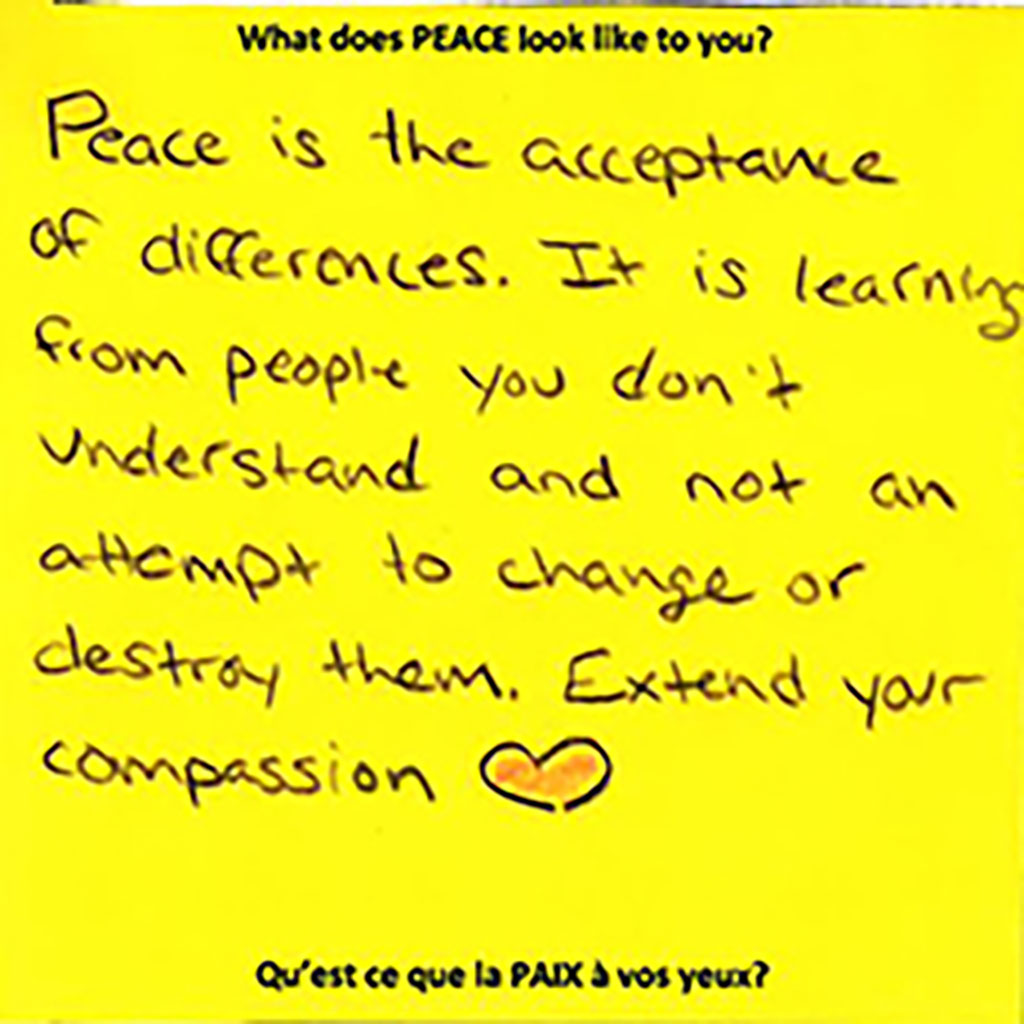
I like this tile because it has a lot of meaning to me. I grew up in Burundi where peace is not applicable or in existence. In our society, we have a composition of tribes where people believe that we are different and we should do things differently. However, all Burundians are the same. We speak only one mother tongue and we have the same culture.
Since people had different opinions regarding peace, my country has fallen in the conflict of division between our people. Some people think that in order to embrace peace, we have to be divided and be different, but on the other hand, others think that we should not change.
Many people believe that changes are bad and may bring hate and destroy people’s differences. Understanding is the key to success because once you understand someone’s opinion or ideas you could be happy to sit together and discuss the matter.
That is why peace in my native country is still hard to achieve. It is because most people don’t accept the differences. That is why this tile was the most meaningful to me.
Anne-Marie
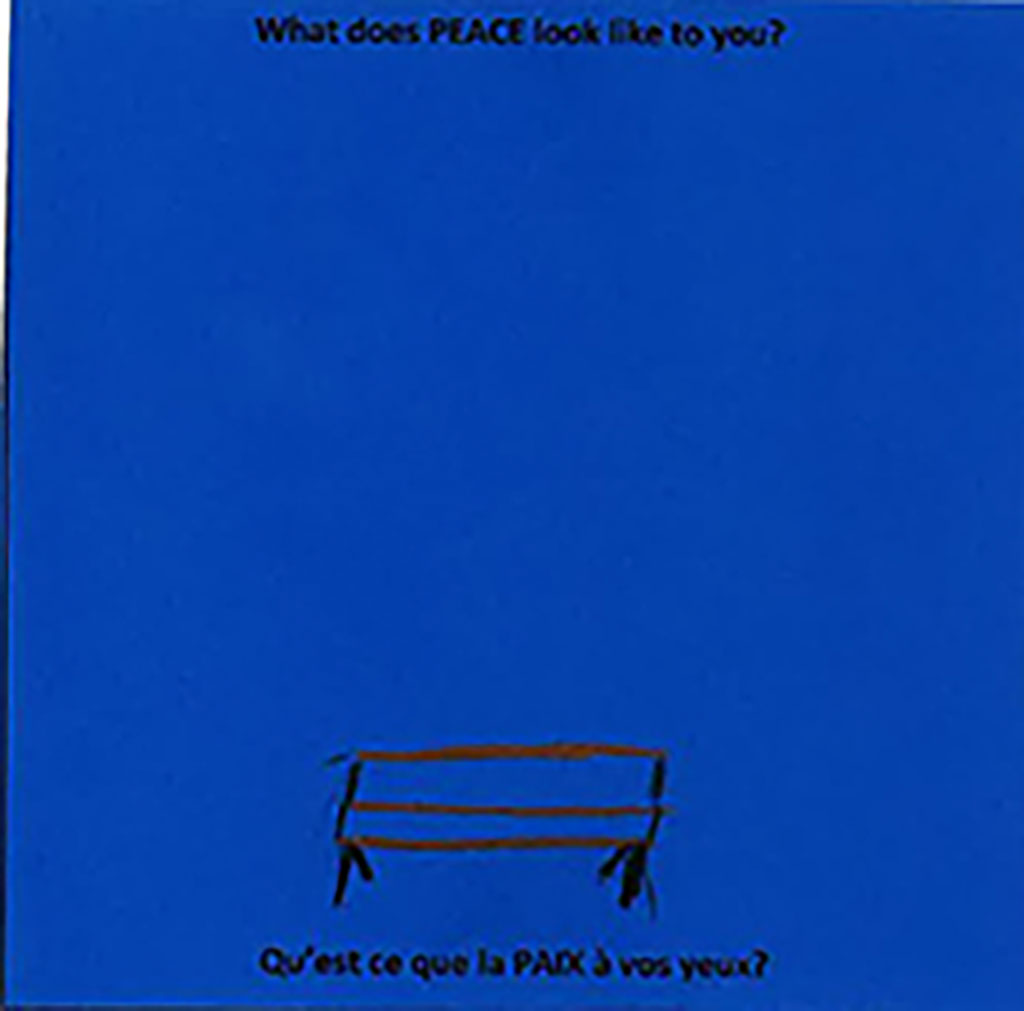
I like benches because they are unique kind of space. Benches, being a shared public space, invite interaction between strangers who might otherwise not meet. I have had a few pleasant interactions with strangers on benches, and have had some really interesting conversations that way. Sometimes we stick to light conversation about the weather, or sometimes we very quickly start to share important details about our lives with each other. I think that these deeper kinds of interactions can be the building-blocks for peace, because they get you to know a bit more about people you wouldn't normally meet, and part of peace is getting along with everyone.
I also like this tile because it reminds me of sitting on a bench in Point Pleasant Park. The park is a place that is very peaceful to me, because I spent a lot of time there with my friends as a child. I also find that reading on a bench in the park is really peaceful and just sitting and watching the ocean helps me think. In a more general way, having benches outdoors implies a certain level of peace: for an outdoor bench to be useful or used, the area it is in has to be free of bombings and armed conflict. Benches also imply freedom of movement, since they can be used by anyone and tend to be scattered all over cities. The dark blue background of this tile makes me think of sitting on a bench at night. I like being outside in cities at night because it gives you a much different impression of the city, with less traffic and fewer people. However, I find that for me that I need to be in a place free of crimes, like mugging or sexual violence, in order to be able to find a bench peaceful at night.
Amy
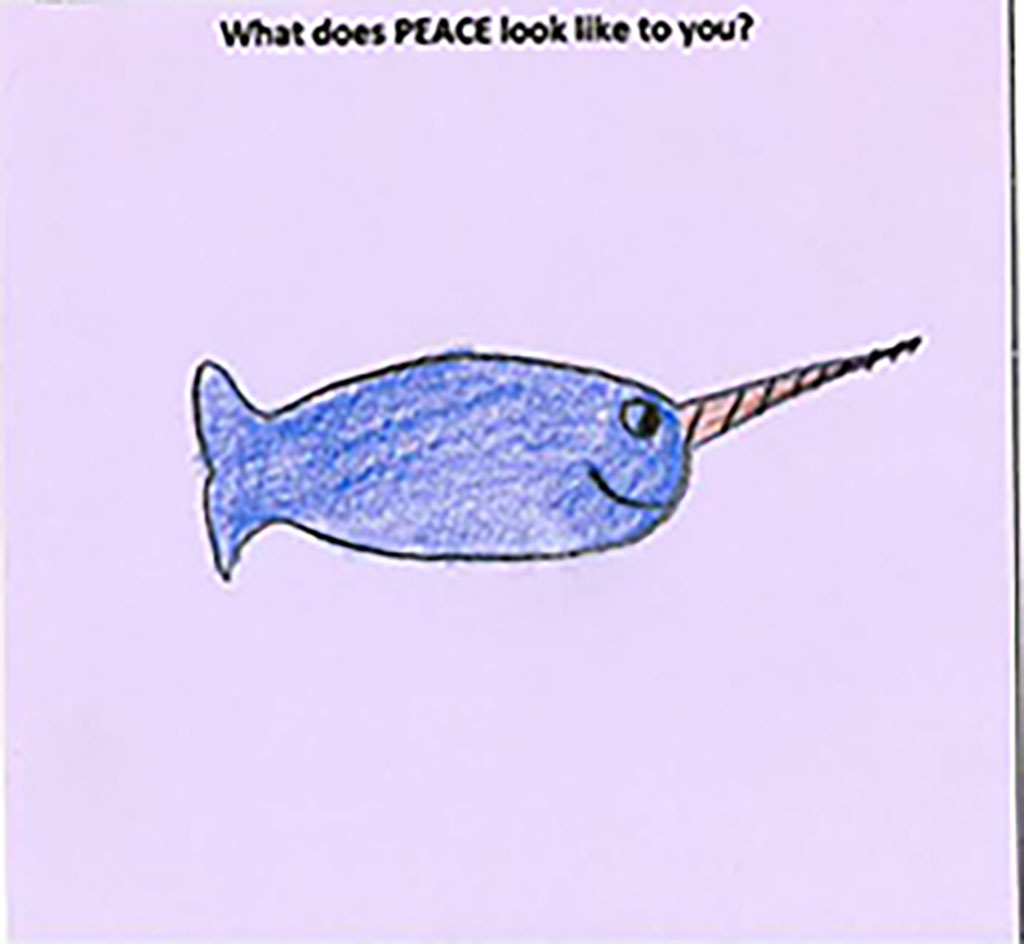
This peace tile, besides being adorable, holds a great message about peace. Despite their intimidating appearance, narwhals are known to be relatively peaceful animals. Their tusks are elongated teeth that project around 1.5 to 3 meters from their heads, yet scientists do not know their exact purpose. Nerves connected to the tusk suggest that it is not used as a weapon, but instead, the narwhal might be using the tusk to gather information about their environment, detecting such levels as temperature and pressure. I think that this tile relates very well to peace, because it demonstrates that things are not always as they appear; a threatening looking tusk actually holds sensitive and complex secrets. This shows that we should avoid acting on our assumptions and educate ourselves before passing judgement. Developing our capacities for understanding and empathy are important steps towards creating peace.
So, are you inspired by these tiles? Would you interpret them in the same way? What does PEACE look like to you? Leave your thoughts in the comments or come by the Museum to create a tile of your very own!
